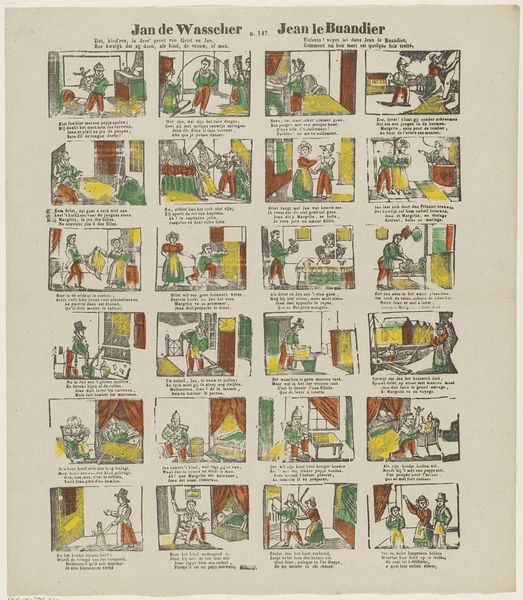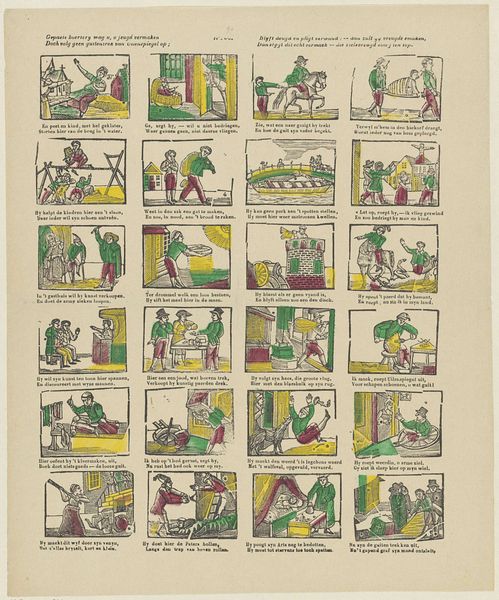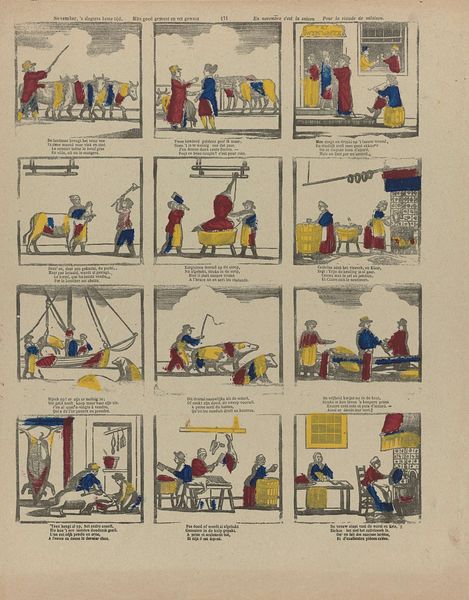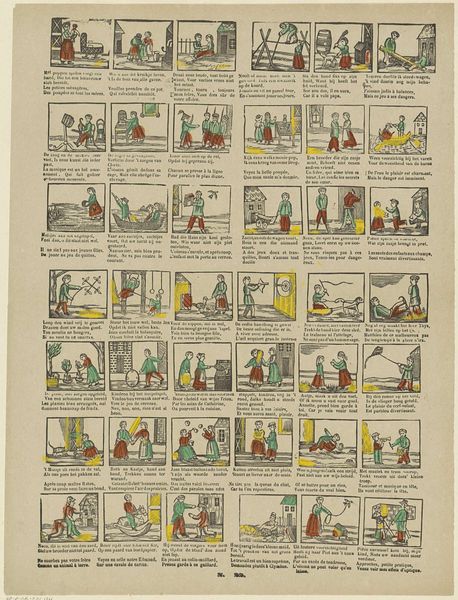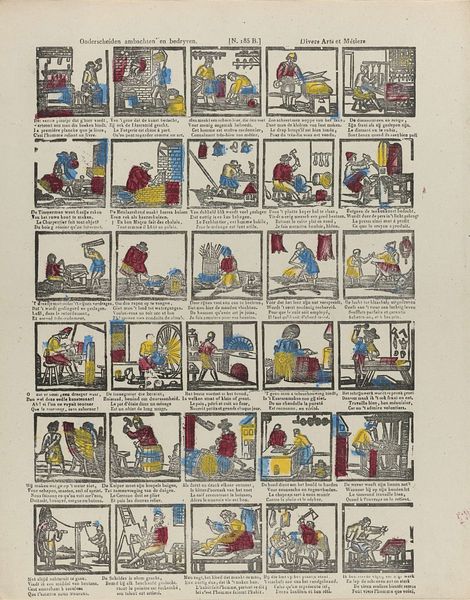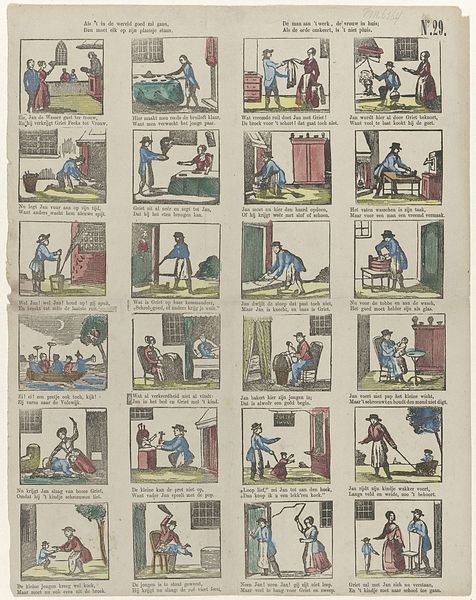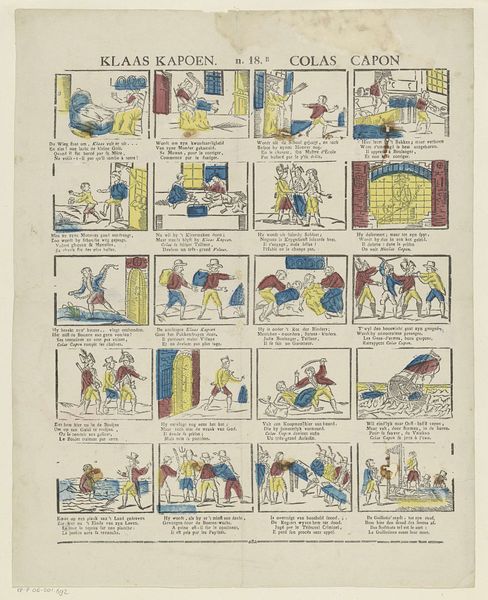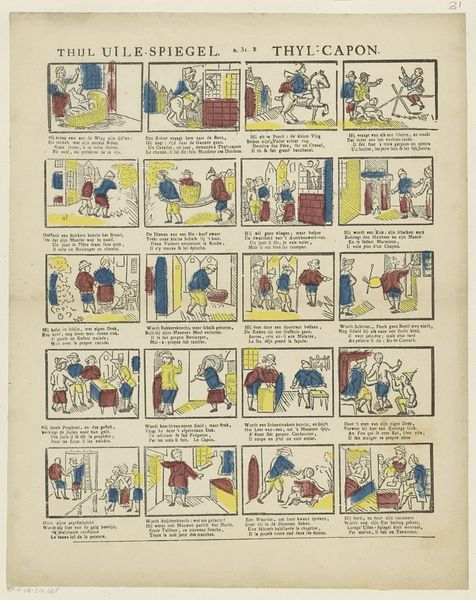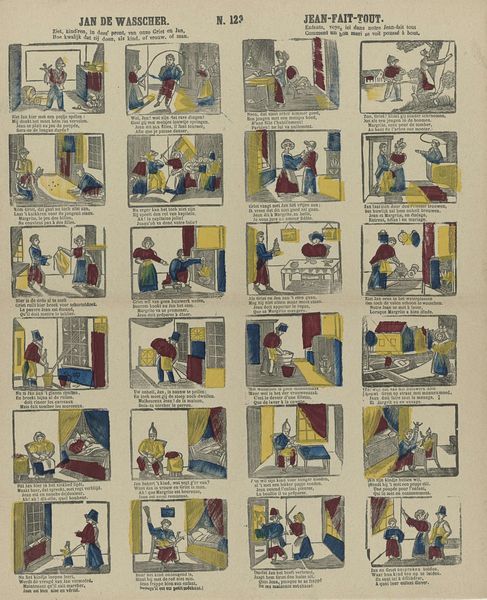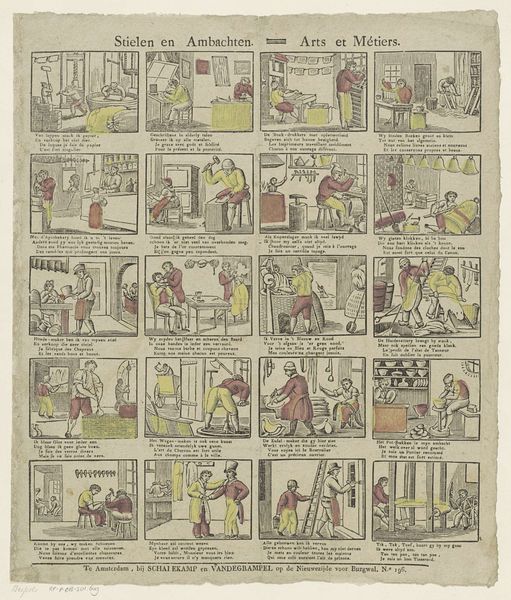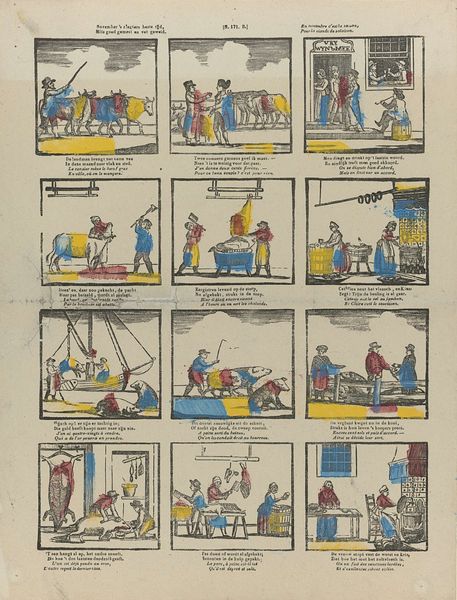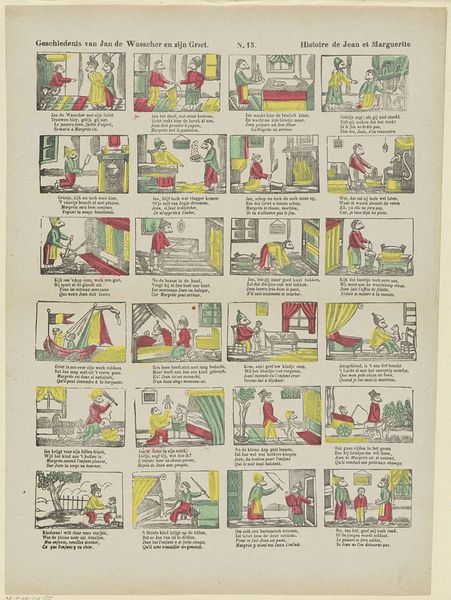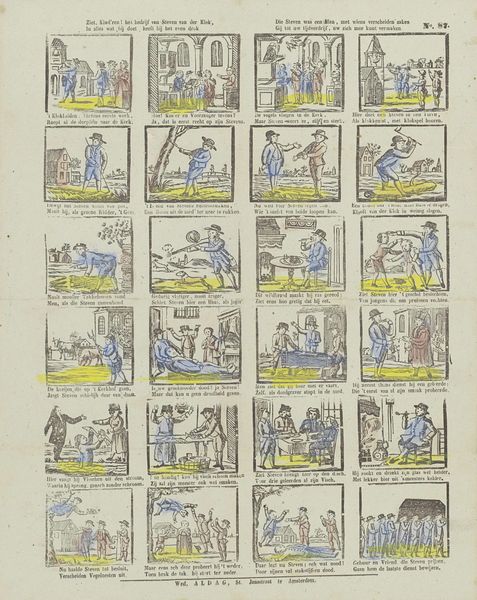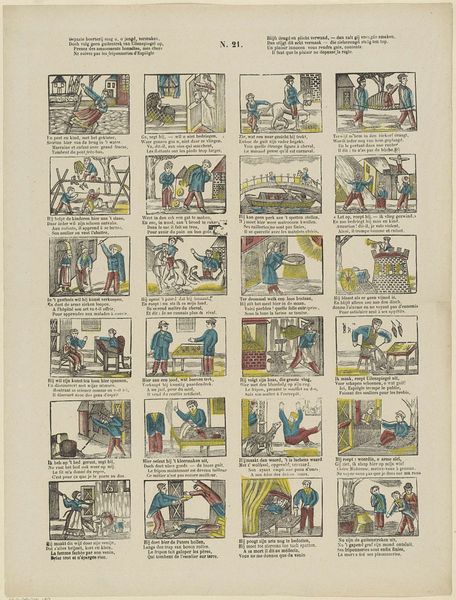![Al wat men op deez' prent beziet, / Is aperij, en anders niet [(...)] by Alexander Cranendoncq](/_next/image?url=https%3A%2F%2Fd2w8kbdekdi1gv.cloudfront.net%2FeyJidWNrZXQiOiAiYXJ0ZXJhLWltYWdlcy1idWNrZXQiLCAia2V5IjogImFydHdvcmtzLzE5MjM0OGY2LTJkMmQtNDM5Ny05ZTZiLTIwYTU5ODBiNjRjYi8xOTIzNDhmNi0yZDJkLTQzOTctOWU2Yi0yMGE1OTgwYjY0Y2JfZnVsbC5qcGciLCAiZWRpdHMiOiB7InJlc2l6ZSI6IHsid2lkdGgiOiAxOTIwLCAiaGVpZ2h0IjogMTkyMCwgImZpdCI6ICJpbnNpZGUifX19&w=3840&q=75)
Al wat men op deez' prent beziet, / Is aperij, en anders niet [(...)] 1800 - 1833
0:00
0:00
graphic-art, print, etching
#
graphic-art
#
narrative-art
# print
#
etching
#
comic
#
genre-painting
Dimensions: height 415 mm, width 291 mm
Copyright: Rijks Museum: Open Domain
Editor: Here we have "Al wat men op deez' prent beziet, / Is aperij, en anders niet [(...)]", an etching dating sometime between 1800 and 1833. The artist is Alexander Cranendoncq, and it's currently housed in the Rijksmuseum. It has this sort of comic-strip layout with anthropomorphic animals…almost like scenes from a play. What can you tell me about its context? Curator: This print, like many satirical prints of the era, uses animals to critique human society. Think of it as a visual social commentary, pointing out follies and vices within specific communities and institutions. What do you notice about the social classes represented here? Editor: It seems like a pretty diverse set of characters depicted—from what appear to be merchants to domestic workers. The humor is almost biting…not overtly political, but definitely holding up a mirror. Curator: Precisely. The clothing, the settings – they provide clues about the roles and activities being satirized. Prints like this circulated widely, reaching diverse audiences. How do you think the accessibility of this medium influenced its impact? Editor: I'd imagine that distributing prints democratizes art, but they can be interpreted differently depending on one's background and personal politics. Curator: Indeed. And institutions like the Rijksmuseum play a role in shaping that interpretation, isn’t it so? Bringing what was once subversive, widely-circulated imagery, into the canon of fine art. The act of framing becomes key. Editor: So, the piece itself and where it's placed within the cultural landscape speak volumes. I’m now looking at it with new eyes. Curator: Exactly. History reveals the multiple layers.
Comments
No comments
Be the first to comment and join the conversation on the ultimate creative platform.
